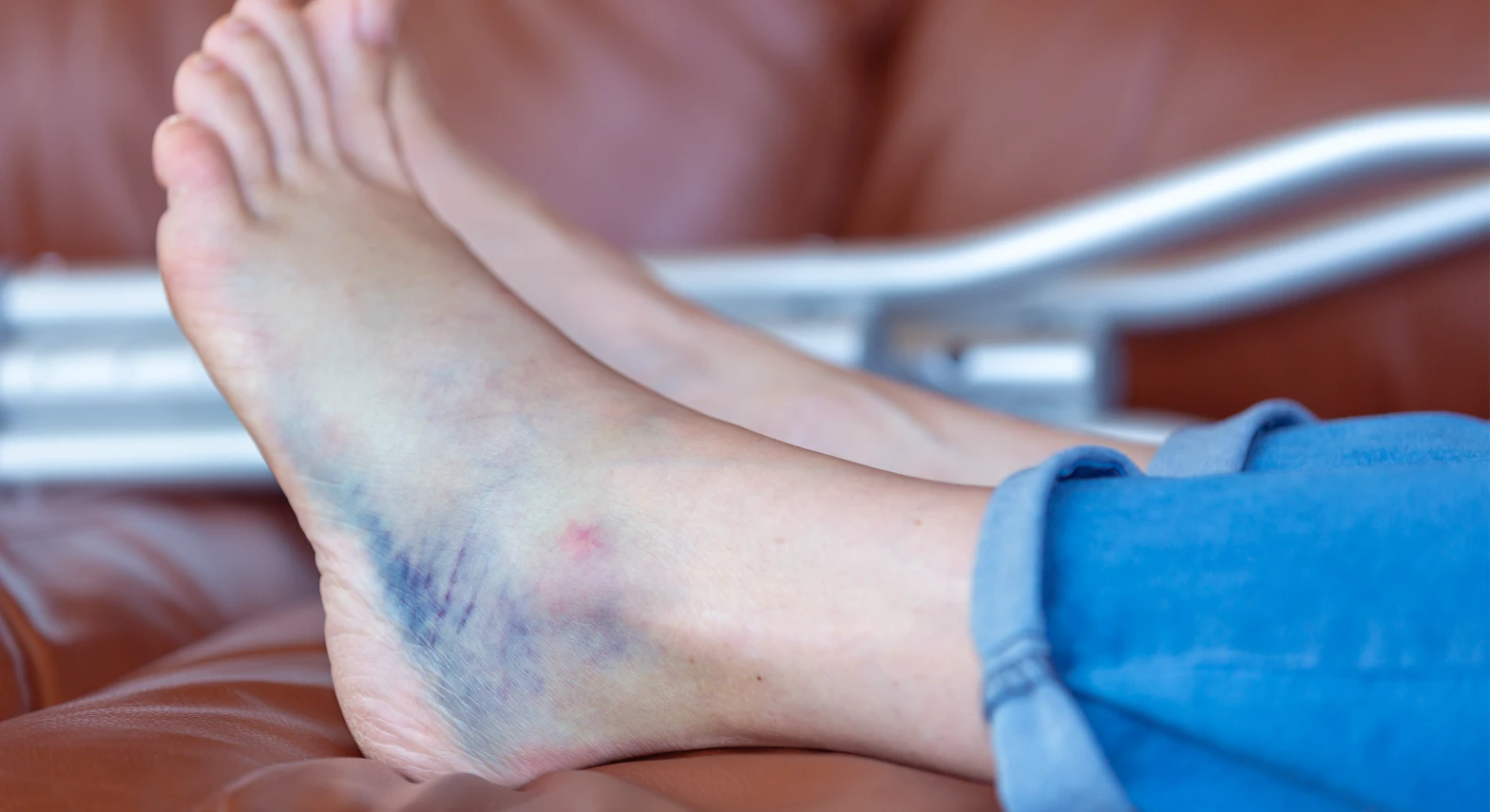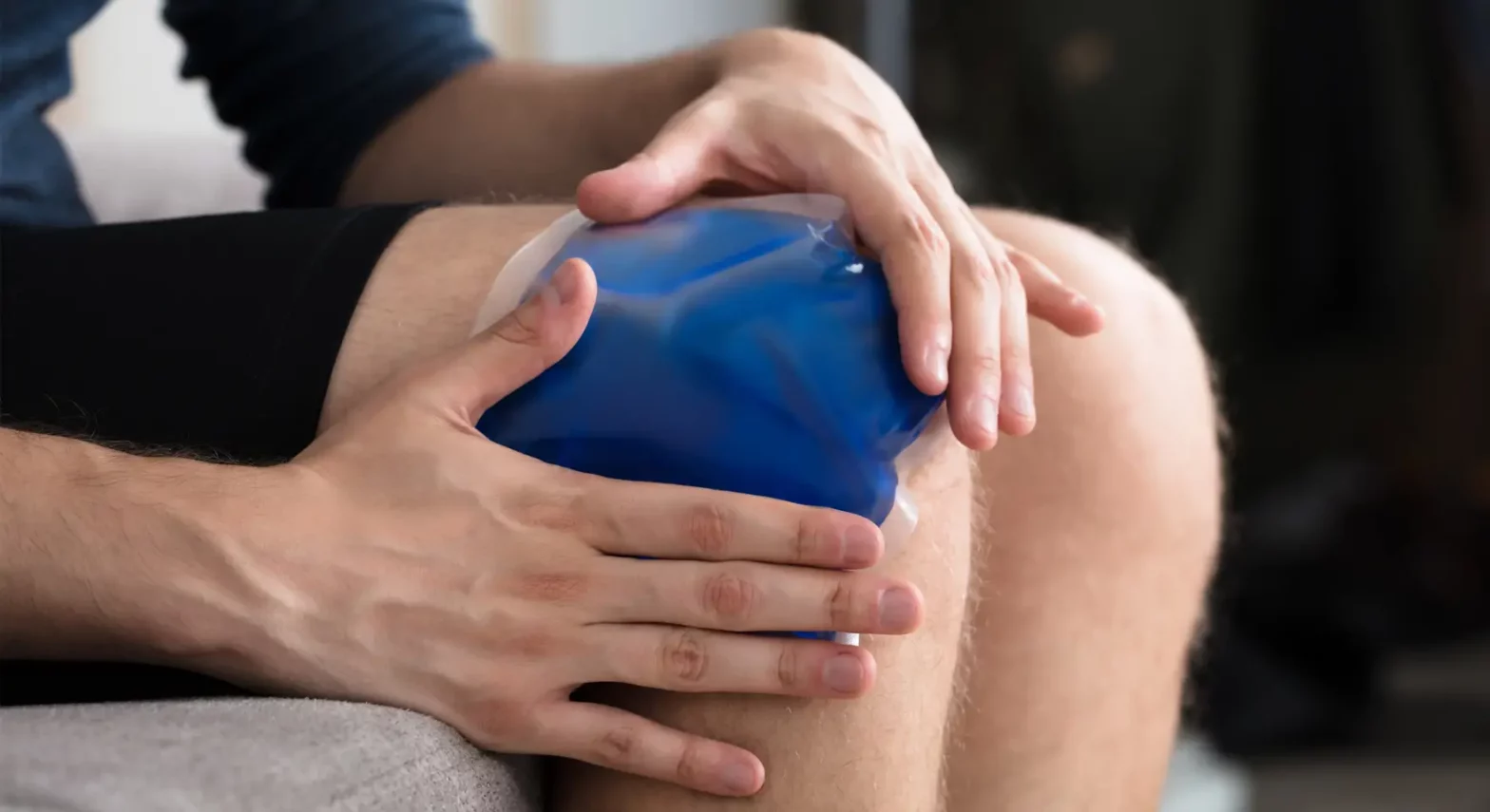January 11th, 2024
Painful Steps: Diagnosing and Treating Plantar Fasciitis

Plantar fasciitis (PLAN-tar fashee-EYE-tiss) is a common painful foot condition affecting over 1 million Americans yearly. It is the most frequent cause of heel discomfort in adults and can limit your daily activities and make walking miserable.
The plantar fascia is a strong, slim aponeurosis (a structure similar to a tendon) that supports your foot’s arch. Microtears cause damage to the plantar fascia, leading to the degeneration of the tissue, and causing pain. There are several treatment options for plantar fasciitis, and most people experience significant relief from symptoms without surgery.
Expert Insights
What is Plantar Fasciitis? - J. Carr Vineyard, MD
What is Plantar Fasciitis?
The plantar fascia extends from the heel to each metatarsal bone to form the arch of your foot.[1] It absorbs the stress placed on your feet through everyday activities like walking, playing sports, and running. Over time this stress can damage the tissue, causing pain and foot stiffness.[5] Plantar fasciitis is more common among athletes; however sedentary people can be affected by it as well.[2]

Signs and Symptoms of Plantar Fasciitis
The most frequent symptom of plantar fasciitis is heel pain, which is the most uncomfortable after getting up in the morning or sitting for a prolonged period. The pain usually improves after a few steps, but worsens again after extended activity. The pain may be so intense that it is more comfortable to walk on your toes.[2]
There may be a dull, aching pain your heel at the end of the day. You may also notice foot stiffness or swelling around the heel. The pain may move further into the foot or heel in severe cases. Discomfort may lead to being unable to play sports or run.[5]
Risk Factors
Most cases of plantar fasciitis happen without a specific cause. Still, some risk factors can make it more likely to develop symptoms.[1, 2]
- Increased activity or starting a new activity.
- Repeated high-impact movements such as dancing, running, or sports.
- Long periods of standing on hard surfaces (certain professions have higher risk, like teachers, nurses, and factory workers.)
- Obesity
- Age (most common in people 40-60 years old.)
- Tight calf muscles.
- High arches or flat feet.
Diagnosing Plantar Fasciitis
Plantar fasciitis is mostly diagnosed by history and physical examination. Your doctor will examine your foot to look for the most tender spot, usually just in front of the heel bone. They will also examine the rest of your foot and ankle to find any swelling or stiffness.[2]
Laboratory tests are not needed to diagnose plantar fasciitis; however, they may be done to ensure that another condition is not causing your symptoms.
X-ray imaging is not necessary to diagnose plantar fasciitis. However, a doctor may rule out arthritis or fracture with X-rays. A plain radiograph may show a bony heel spur in certain individuals with plantar fasciitis. The spur does not cause the symptoms; rather, the stress placed on the plantar fascia caused the bone spur. Not all people with plantar fasciitis will have a bone spur.[5]
Ultrasound and MRI imaging are rarely done in cases of plantar fasciitis, but may help identify rupture of the fascia, as well as thickening of the fascia and surrounding fluid caused by inflammation.[2, 5]
Treating Plantar Fasciitis
The mainstays of treatment for plantar fasciitis are rest, stretching, ice therapy, massage, non-steroidal anti-inflammatory drugs (NSAIDs), and supportive footwear.[5]
Rest
Avoid stressful activities such as running or standing for long periods on hard surfaces.
Stretching
Focus on stretches for the plantar fascia and calf.
- Plantar fascia stretch: In a seated position, cross your painful foot over the opposite knee. Hold the toes of the affected foot and gently pull them up in the direction of your ankle. Use your other hand to feel along the plantar fascia, which should feel like a tense band along the bottom of your foot during the stretch. Hold stretch for 10 seconds and repeat 20 times.
- Calf stretch: Place your hands against a wall in front of you. Step back about one step with the leg you want to stretch. Keep back heel on the ground and then bend front knee until you feel a stretch in the back calf. Hold for 10 seconds and repeat 20 times.
Ice therapy
Roll your foot over a frozen water bottle for 20 minutes. You may also use an ice pack, but be sure to use a towel between the ice and the skin to avoid injury.
Massage
A small rubber ball, such as a lacrosse ball may be rolled gently along the plantar fascia.
NSAIDs
Over-the-counter medications such as ibuprofen, naproxen, or aspirin decrease inflammation and relieve pain. Take with food and follow the dosing instructions on the box. Check with your doctor before starting these medications.
Supportive footwear
Well-fitting and supportive shoes are essential to help relieve plantar fascia pain, especially if you have high arches or flat feet. Shoe inserts, such as premade or custom orthotics may increase support and comfort.
Injections
Cortisone may be used to decrease inflammation with plantar fasciitis; however, the risk of fascia rupture limits its use.
Platelet-rich plasma (PRP) is taken from your blood and the plasma has been shown to help stimulate tissue healing. PRP is expensive, and most insurance plans don’t cover it currently.[1,4]
Other options
Extracorporeal Shockwave Therapy (ESWT) and ultrasonic therapy are available to stimulate healing of damaged tissues. However, neither ESWT nor ultrasonic therapy has shown significant success in treating plantar fasciitis.[1, 5]
Surgery
Most cases of plantar fasciitis are relieved by non-surgical management within one year. For those who do not respond, the preferred surgical method is an endoscopic plantar fasciotomy. This procedure cuts a portion of the plantar fascia to release tension and has been effective in relieving symptoms.[3]
Conclusion
Plantar fasciitis is the most common cause of heel pain and can become severe. You should consult your doctor for a proper diagnosis if you have heel pain. Beginning lifestyle management for plantar fasciitis is the best way to improve symptoms. Rest, stretching, massage, ice, and NSAIDs can completely resolve symptoms if used regularly.
Find an Orthopedic Doctor in Your Area





